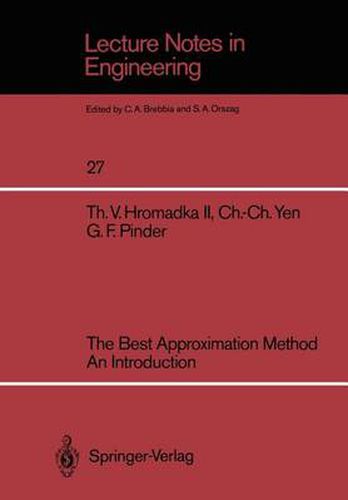Readings Newsletter
Become a Readings Member to make your shopping experience even easier.
Sign in or sign up for free!
You’re not far away from qualifying for FREE standard shipping within Australia
You’ve qualified for FREE standard shipping within Australia
The cart is loading…






This title is printed to order. This book may have been self-published. If so, we cannot guarantee the quality of the content. In the main most books will have gone through the editing process however some may not. We therefore suggest that you be aware of this before ordering this book. If in doubt check either the author or publisher’s details as we are unable to accept any returns unless they are faulty. Please contact us if you have any questions.
The most commonly used numerical techniques in solving engineering and mathematical models are the Finite Element, Finite Difference, and Boundary Element Methods. As computer capabilities continue to impro’:e in speed, memory size and access speed, and lower costs, the use of more accurate but computationally expensive numerical techniques will become attractive to the practicing engineer. This book presents an introduction to a new approximation method based on a generalized Fourier series expansion of a linear operator equation. Because many engineering problems such as the multi dimensional Laplace and Poisson equations, the diffusion equation, and many integral equations are linear operator equations, this new approximation technique will be of interest to practicing engineers. Because a generalized Fourier series is used to develop the approxi mator, a best approximation is achieved in the least-squares sense; hence the name, the Best Approximation Method. This book guides the reader through several mathematics topics which are pertinent to the development of the theory employed by the Best Approximation Method. Working spaces such as metric spaces and Banach spaces are explained in readable terms. Integration theory in the Lebesque sense is covered carefully. Because the generalized Fourier series utilizes Lebesque integration concepts, the integra tion theory is covered through the topic of converging sequences of functions with respect to measure, in the mean (Lp), almost uniformly IV and almost everywhere. Generalized Fourier theory and linear operator theory are treated in Chapters 3 and 4.
$9.00 standard shipping within Australia
FREE standard shipping within Australia for orders over $100.00
Express & International shipping calculated at checkout
This title is printed to order. This book may have been self-published. If so, we cannot guarantee the quality of the content. In the main most books will have gone through the editing process however some may not. We therefore suggest that you be aware of this before ordering this book. If in doubt check either the author or publisher’s details as we are unable to accept any returns unless they are faulty. Please contact us if you have any questions.
The most commonly used numerical techniques in solving engineering and mathematical models are the Finite Element, Finite Difference, and Boundary Element Methods. As computer capabilities continue to impro’:e in speed, memory size and access speed, and lower costs, the use of more accurate but computationally expensive numerical techniques will become attractive to the practicing engineer. This book presents an introduction to a new approximation method based on a generalized Fourier series expansion of a linear operator equation. Because many engineering problems such as the multi dimensional Laplace and Poisson equations, the diffusion equation, and many integral equations are linear operator equations, this new approximation technique will be of interest to practicing engineers. Because a generalized Fourier series is used to develop the approxi mator, a best approximation is achieved in the least-squares sense; hence the name, the Best Approximation Method. This book guides the reader through several mathematics topics which are pertinent to the development of the theory employed by the Best Approximation Method. Working spaces such as metric spaces and Banach spaces are explained in readable terms. Integration theory in the Lebesque sense is covered carefully. Because the generalized Fourier series utilizes Lebesque integration concepts, the integra tion theory is covered through the topic of converging sequences of functions with respect to measure, in the mean (Lp), almost uniformly IV and almost everywhere. Generalized Fourier theory and linear operator theory are treated in Chapters 3 and 4.